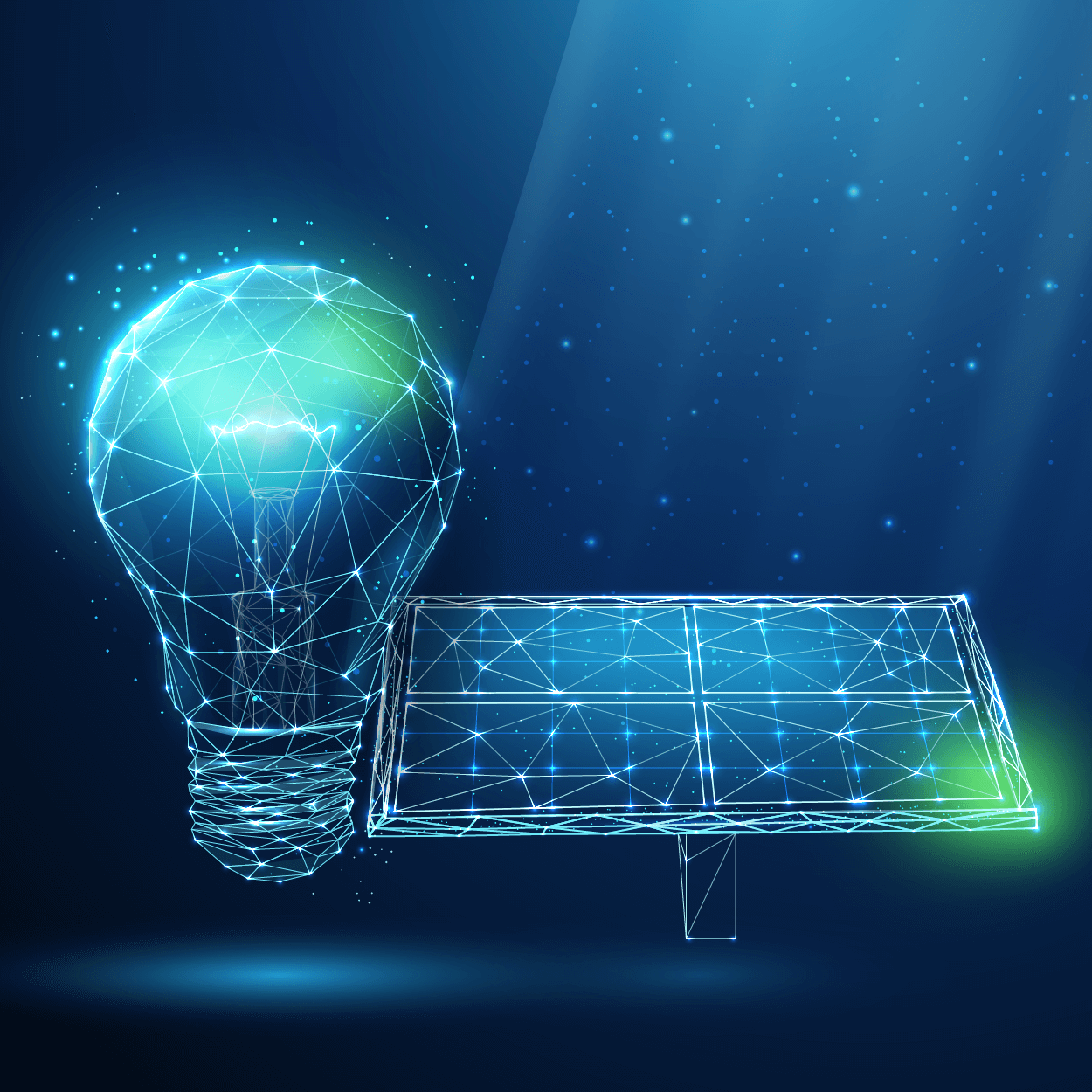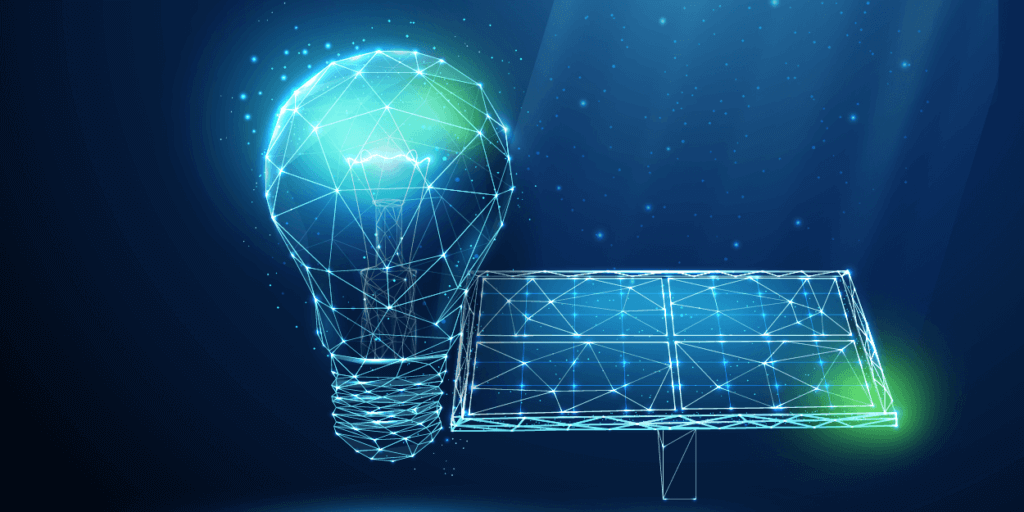
As you learn more about solar panels you will discover the industry has its own lexicon of solar terminology. Two of the most common terms are solar energy and solar power.
Both are used interchangeably, along with other terms such as:
- Renewable power
- Renewable resources
- Green energy
- Clean energy
When you’re reading a blog or brochure, “solar energy” and “solar power” are most likely used to refer to the overall system of converting sun radiation into alternating current (AC) electricity. However, when you’re getting into the specifics of solar panel mechanics, there is a difference—and knowing it can offer you powerful insights into whether the solar switch is right for you.

Solar Energy
Energy, in the broadest sense, means the capacity to do work. Work, from a physical science perspective, occurs when a certain force is applied to move an object in the direction of the force. For our purposes, we’ll focus on solar energy as the expected amount of sunlight your solar panels can turn into electricity.
In the Sun, this energy begins in its core. Hydrogen atoms collide against each other due to the enormous gravitational forces acting on them. When these hydrogen atoms hit hard enough, they fuse to create a helium atom. At the moment of fusion, there is a massive amount of energy produced (comparatively, for how small atoms are).
The Sun fuses about 620 million metric tons of hydrogen every second, and the energy launches off into outer space all around it. A minuscule fraction of this energy strikes our planet and provides us with the continuous heat and light, in the form of photons, which power all life on Earth.
How the Sun’s Energy Affects Everything on Our Planet
When heat and light from the Sun reach Earth, everything touched is affected—from warming the air and oceans to providing energy for photosynthetic organisms like plants and fungi. In fact, many types of renewable energy are driven by the Sun. Wind is created by the constant heating and cooling of our atmosphere. Hydropower relies on rain and evaporation, which are also natural processes driven by this heat and light.
If we could harness every bit of sunlight striking our planet for only 90 minutes, we would have enough energy to power our entire global civilization for a year. While we’ve only harnessed the Sun’s energy for about 150 years, the technology has reached the point where individual homeowners can easily benefit.
How We Use the Sun for Residential Solar Systems
When photons strike a semiconductive material, like silicon, they free electrons from their atoms. These electrons produce an electric charge when they escape. With the right equipment—like high-quality solar cells arranged in black, monocrystalline solar panels—we can harness this direct current (DC) electric charge and convert it into the AC electricity used to power our homes.
While one solar cell generates only a small amount of energy, each panel may hold between 36 to 144 cells. A residential solar system is typically between 15 and 25 panels, depending on your needs, and all of these panels work together to convert solar energy into solar power.

Solar Power
Power refers to the amount of energy flowing from one point to another. Solar power, then, includes the means to convert sunlight into electricity at a certain rate to energize our homes and household appliances.
For example, you could think of it like a garden hose filling a pool. The amount of water available to go into the pool represents solar energy. It is the maximum amount of energy we can expect to be in our system, due to the sunlight bouncing off our solar panels. However, we’re limited by the hose—our solar panel system—and the pressure running through the hose represents our solar power. The more energy absorbed and converted by your solar system, the more power flowing between your solar panels and your home.
The main crossroads of this energy is at your inverter. Most home systems and appliances (everything from your HVAC and lighting systems to your refrigerator and phone charger) use AC power. This means solar energy must be converted from the DC power generated by solar cells into useful AC electricity before it flows through your meter and into the utility grid and your home. There are different types of solar inverters, which can impact the flow of solar energy.
- Central inverters are similar to a lower-pressure garden hose. A central inverter acts as the single inverter for the entire system. If the inverter malfunctions, you can replace the one piece. However, central inverters are limited by the weakest-performing solar panel; if a single panel underperforms the entire system is throttled to the same level.
- Microinverters are similar to a higher-pressure garden hose. Microinverters are placed on each panel and convert from DC to AC at the panel level. While this means you have 15-25 more pieces of hardware in your overall system, it also means each inverter works with the efficiency of its associated solar panel—which leads to more efficient power generation.
The more efficient your solar system, the better the flow of energy to your home.
Energize your Home by Making Solar Energy your Solar Power
When deciding to add a solar panel system to your home, it’s important to know how it works. Knowing the difference between solar energy and solar power allows you to better understand the technology behind renewable power generation—and how it can benefit you.
However, there is still a lot to learn about the industry as a whole. Installing your solar system involves hardware, paperwork, installation labor, and financial incentives you’ll want to take advantage of. It helps to have a team you can trust, and we’re here for you at Blue Raven Solar. We have installed solar panels on thousands of houses, and our mission is to make solar affordable and accessible for as many homeowners as possible.
If you’re ready to investigate making the switch to a renewable energy source, we offer a free savings estimate which considers your location, financial budget, and energy needs. Reach out to our solar experts to see if switching to solar power, via solar energy, is right for you.



Sorry, the comment form is closed at this time.